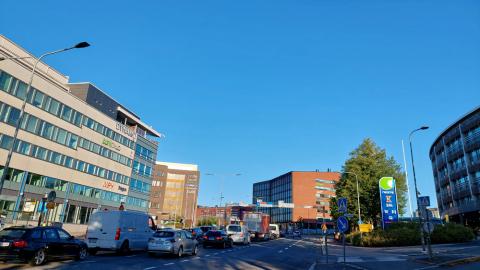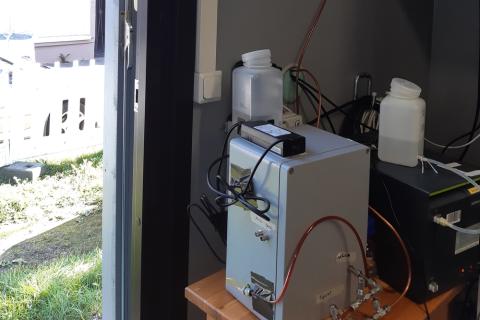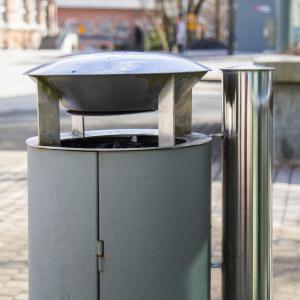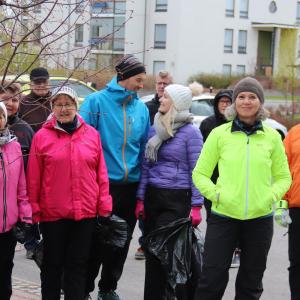Three devices were compared for measuring ultrafine particles at the Tampere air quality monitoring station

There are currently no valid binding guideline or limit values for ultrafine particle concentrations. In 2021, the WHO issued new and stricter non-binding guidelines values for pollutant concentrations. As a daily average, less than 1,000 pcs/cm3 is a low concentration, while a high concentration is more than 10,000 pcs/cm3. Concentrates larger than 20,000 pcs/cm3 as an hourly average are also mentioned as high concentrations. The approximate concentration for relatively clean air in remote areas is typically 1,000 particles/cm3, for example, whereas in cities the reading can be between 10,000 and 100,000 at most.
The goal of the measurements was to compare the particle concentrations measured using different methods and to examine how they compare to the recent target values. During measurements lasting about one month, the hourly average values were exceeded twice, with peak concentrations exceeding 100,000 pcs/cm3. The average concentration during the entire measurement period was approximately 4,900 pcs/cm3, with the daily average values varying between 3,000 and 8,000 pcs/cm3. Concentrations are usually lower during the summer because the ground surface warms up during the day, causing air to rise upwards and dilute. In fact, the limit values have been exceeded considerably more often in Tampere during the winter.
High concentrations measured in Tampere and other cities
In the Tampere air quality monitoring network, ultrafine particles have been measured at the Pirkankatu and Epilä monitoring stations since 2019 with a device that measures the amount of electrical charge accumulated on the surface of the particles, from which the number concentration can also be calculated. In 2022, the number concentration of particles did not at any time fall below the low concentration specified by the WHO at either monitoring station in Tampere. On the other hand, they exceeded the high concentration level on approximately 35 days at both stations.
Ultrafine particles pose a significant health hazard
Ultrafine particles (UFP) are airborne particles less than 100 nanometres in size. They are too small to scatter light and thus invisible, but due to their minute size, they enter the alveoli of the lungs through respiratory air and from there into blood circulation and internal organs. Ultrafine particles have been found in the brain, liver and kidneys, for example, and they have been found to have significant adverse effects on health. Ultrafine particles are produced in combustion, especially during transport and wood combustion in cities, and as a result of certain chemical processes.
Ultrafine particles to be monitored within the EU - no limit values for them yet
The EU is the first major player in reforming the regulation of air quality measuring. The revised Ambient Air Quality Directive would also oblige ultrafine particles to be measured. Monitoring would involve the real-time measurement of the number of particles and the distribution of particle sizes at selected measurement points.
In its proposal, the EU has not yet set limit values for ultrafine particle concentrations, as has already been set for other air pollutants. There are still not enough long time series of particle concentrations, which also makes the assessment of epidemiological health hazards uncertain.
Devices must meet standards and operate for extended periods without maintenance
Long-term air quality measurements require devices that both operate independently for long periods of time and meet the technical requirements related to the measurements. The Pegasor device is already used in Tampere for the measurement of ultrafine particles, and the device developed by the University of Helsinki and the Airmodus commercial device were now imported for comparison measurements.
“Our devices are designed to comply with the standard for measuring the number concentrations of ultrafine particles. The device is capable of performing continuous measures for at least six months without maintenance. During the measurement period, we had a direct connection to the device from Helsinki and tracked the data it produced,” says Juha Kangasluoma, the project manager from the University of Helsinki in charge of the project funded by Business Finland that aims to commercialise technology.
In Tampere, air quality is monitored at four monitoring stations
The air quality of the City of Tampere is monitored by continuous measurements at the monitoring stations of Epilä, Pirkankatu, the Tampere Bus Station and Kaleva. In addition to ultrafine particles, the stations measure the concentrations of pollutants, i.e. nitrogen dioxide, respirable particles, fine particles and ozone, controlled by the guideline and limit values.



